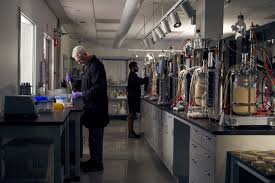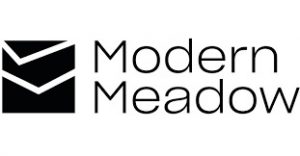
According to shoe manufacturers, the use of natural leather has always been very different from synthetic materials. Leather is made from animal skins and is a by-product of the meat industry, while leather is also a renewable resource in nature.
If the skins do not turn into leather, they should be buried and their use is very limited. On the other hand, artificial materials are based on oil and are the product of the chemical and man-made industries. These industries use fossil fuels, which are certainly not renewable sources. Also, contrary to the claims of synthetic leather manufacturers that these products are similar to natural leather, it must be admitted that these products are completely different from leather.
Environmentalists, on the other hand, are faced with the dilemma of whether to buy shoes made of leather, which is a natural material but requires the slaughter of animals and coping with it. It is not easy, or they have to use shoes made of synthetic plastic materials whose resources are raw materials and valuable non-renewable energy sources.
To solve this problem, we need to think of a new source that, while similar to leather, is not a farm but a laboratory.

In its simplest form, animal skins are made up of a chain of collagen, water, creatine, and a variety of proteins. The resistance of the skin is due to the structure of the collagen fibers that are slipped together by the free molecules of water to provide the necessary flexibility for the animal to move freely. In addition, water bonds form part of the protein structure. If these bonds are removed by drying the skin too much, the skin will start to harden due to the cross-linking of the collagen chain.
Tanning involves replacing these watery bonds with tanning agents to create the necessary flexibility and maintain physical quality while protecting the skin. During tanning, unwanted material is removed and replaced with materials that prevent bonding between the collagen chains and keep the leather structure soft and supple.

Launched in 2011, Modern Meadow has introduced a material called “bio-leather-made leather” in October called Zoa, which is a revolutionary alternative to natural leather.
They claim that the prototype material with a capital of more than $ 50 million has been successfully built, and that the possibility of creating a new and larger laboratory has been increased by 60 employees for production.
Central core DNA manipulation is a process that Modern Meadow has performed to produce Zoa.
DNA is a molecule that controls the functioning of an organism with its own structure (just as software codes determine how a computer program works).
Modern Meadow takes a pair of DNA and replaces it with a new pair of DNA. The sequence of data determines the information available to build an organism (similar to the way alphabetic letters are arranged in a certain order to form a word and a sentence).
This DNA can be modified to produce the desired amount of collagen. But where does the original DNA come from?
Until two years ago, Modern Meadow used engineered tissue to produce collagen on a laboratory scale, but today it uses a dedicated biological production process that is able to produce new non-animal collagen compounds that are claimed to be able to compete with collagen found in it. Be the market.
The technology uses the latest version of DNA editing tools to specialize in collagen engineering to create yeast cells. These cells are optimized to produce the desired collagen and in the required amount.
New DNA is inserted into cells and multiplied. The basal cells are the building blocks of living organisms, and the cells are nourished with nutrients, and these nutrients are converted into energy, and the cells multiply rapidly, from tens of cells to billions of cells.
These cells produce collagen and other proteins necessary for leather production. Collagen groups together form a triple spiral collagen molecule.
The triple helical structure of the collagen then forms a network of nanofibers that join together to form the fibers, and eventually the fibers together to form the structure of the original material.
Other processes are performed on these protein structures to create the final product, which is simply tanned and completed. Because the material is not animal-derived, there is no need for lubrication to remove hair, a campaign to remove unwanted tissue, lubrication, degreasing, and the preparation of ashtrays, as these materials are uniform and perfectly flat.

This article simply examines a complex process. Given the obvious practical advances in this area, there seem to be a lot of detail that the company prefers not to disclose. These materials are produced in the form of perfectly uniform plates with regular sizes that are competitive with natural leather because the leather is different from one skin to another.
Another advantage of these materials is that they do not have the effect of knives, barbed wire and growth marks, so they can be easily cut and have less debris like other synthetic plastic materials. According to Dave Williamson, head of operations at the company, the process is designed to make production easier with existing industrial facilities.
Of course, this requires proper investment. According to him, large-scale collagen production and transfer to local factories and leather factories are possible for the final and complete process. A special feature of these materials is that the different parts of a page can have different properties, for example, the appearance and the hand can be changed from one part to another in a controlled way.
Theoretically, it is possible to produce materials for specific designs with this method. Dave Wiliamson states that in terms of cost, the new materials are competitive with natural leather. He adds that Modern Meadow isn’t really looking for a complete replacement for natural leather, but is looking to produce new materials that have a place in the market.
Shoes made from such materials can be of interest to vegans, vegetarians and those who oppose killing animals. It can also be considered by shoe manufacturers with a sarcastic wish that “I wish we could have square-shaped cows.”
The purpose of the Dalir leather industry is to satisfy all sections of society, including vegans, and to try to update its materials and products as much as possible.
Author: Maryam Semsarha
Deputy of the Institute of Chemistry and Petrochemical Research, Standard Research Institute